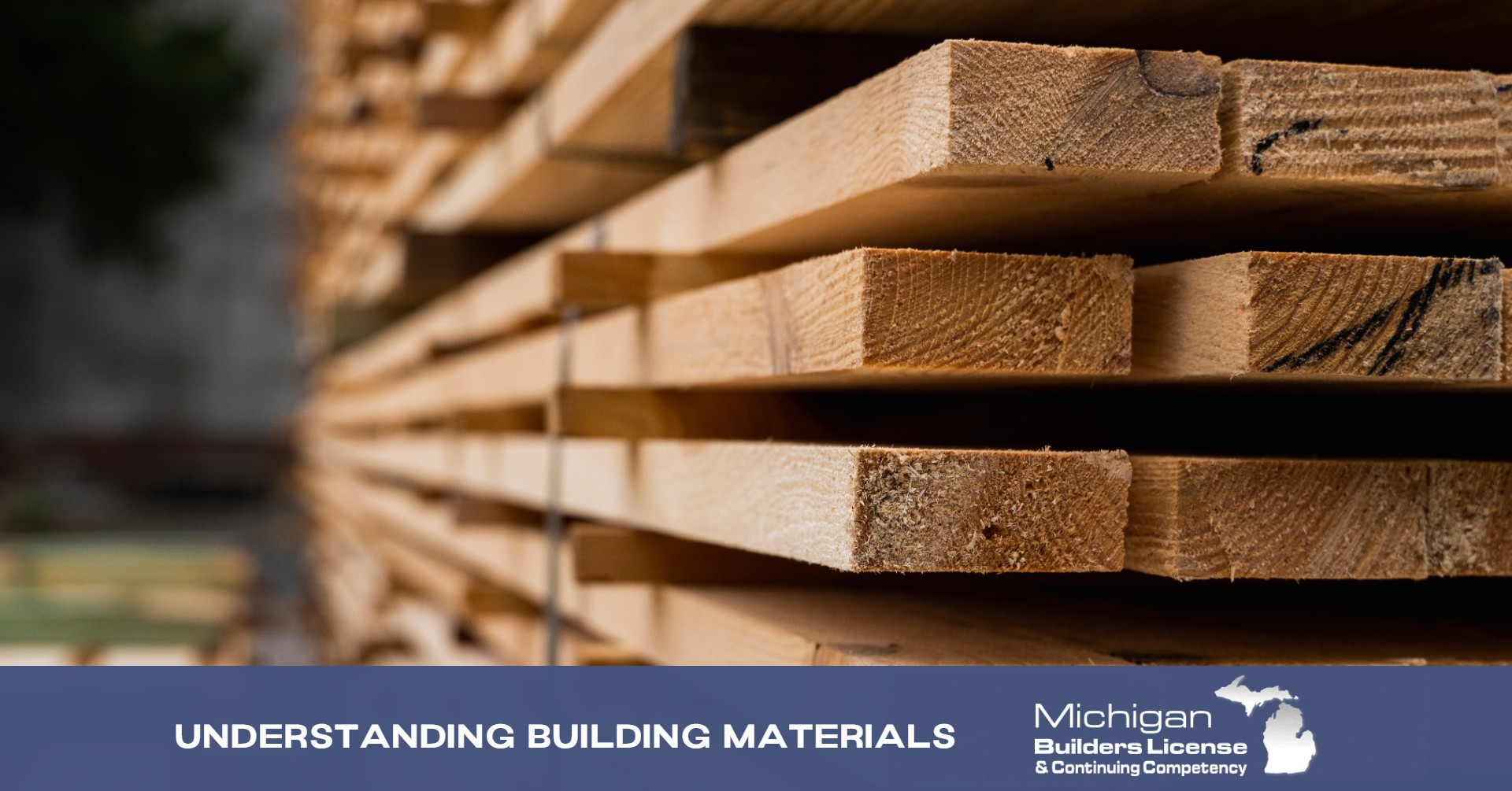In the construction industry, selecting appropriate building materials is vital. The materials used influence everything from the structural integrity and energy efficiency of a building to its aesthetics and cost. For builders in Michigan, a state known for its fluctuating climate, it’s essential to understand the variety of available materials and their specific applications. A thoughtful selection of building materials contributes to creating durable, efficient, and environmentally responsible structures.
Basic Building Materials
Wood
Wood is among the oldest and most versatile building materials, especially for residential construction. It is used extensively for framing, but in Michigan, where humidity and temperature fluctuations are common, it is crucial to choose the right type of wood. The species of wood, its treatment, and drying methods, such as kiln-drying, are important to minimize warping. Ensuring wood has the appropriate moisture content can prevent long-term structural issues. Common woods for framing include pine, spruce, and fir, while oak and maple are typically used for finishes and flooring due to their durability and aesthetic qualities. [1]
Concrete
Concrete is a key material in both residential and commercial construction because of its strength and versatility. Michigan's climate, with frequent freeze-thaw cycles, demands careful concrete mixing, curing, and air entrainment to prevent cracking. According to the American Concrete Institute, proper concrete placement and curing are essential for maintaining structural integrity in variable climates like Michigan’s. Additionally, builders are increasingly using sustainable materials like recycled aggregates and fly ash in concrete to reduce the environmental impact while maintaining its strength. [2]
Steel
Steel is renowned for its high strength-to-weight ratio, making it an ideal material for large-span buildings and multi-story structures. While it is traditionally used in commercial construction, steel is also becoming more common in residential buildings for elements such as beams and columns. Steel’s resilience against harsh weather conditions makes it a popular choice in Michigan’s fluctuating climate. [3] Its durability and long lifespan contribute to lower long-term maintenance costs. [4]
Masonry
Masonry materials such as brick, block, and stone offer excellent durability, fire resistance, and aesthetic appeal. In Michigan, builders must carefully manage drainage, flashing, and weatherproofing to maximize masonry's longevity. Masonry’s thermal mass can also enhance energy efficiency by regulating indoor temperatures, which is particularly useful in a state with significant seasonal temperature variation. [5]
Advanced Building Materials
Engineered Wood Products (EWP)
Engineered Wood Products (EWP), like laminated veneer lumber (LVL) and cross-laminated timber (CLT), are becoming increasingly popular due to their superior strength, dimensional stability, and sustainability. LVL, for instance, offers greater load-bearing capacity than traditional wood, making it an excellent option for beams and headers. [6] These engineered products are also less prone to warping, making them ideal for Michigan’s varying climate conditions.
Insulating Concrete Forms (ICFs)
Insulating Concrete Forms (ICFs) combine concrete's structural strength with foam's insulation properties. This system provides a highly energy-efficient wall solution, which is particularly beneficial in Michigan's cold winters. [7] ICF construction is growing in popularity due to its ability to provide both thermal insulation and soundproofing while maintaining the durability of concrete.
Fiber-Reinforced Polymer (FRP) Composites
Fiber-Reinforced Polymer (FRP) composites are cutting-edge materials used in construction, particularly in infrastructure projects such as bridges and decks. FRP is lightweight yet strong and highly resistant to corrosion, making it well-suited to Michigan’s infrastructure needs. [10] As Michigan continues to invest in resilient infrastructure, FRP’s durability offers long-term benefits, especially in environments prone to harsh weather conditions.
Green Building Materials
Sustainable building practices are increasingly important to Michigan builders, with an emphasis on reducing environmental impact. Several key materials are contributing to greener construction projects:
- Recycled Materials: Builders often use reclaimed wood for flooring and beams, while recycled glass can be found in countertops and tiles. These materials offer both sustainability and unique aesthetic appeal. [9]
- Low-VOC Products: Low-VOC (volatile organic compounds) products, such as paints and sealants, improve indoor air quality, making homes healthier to live in. [10]
- LEED-Certified Materials: Builders striving for Leadership in Energy and Environmental Design (LEED) certification increasingly turn to materials that meet these stringent environmental standards. Using LEED-compliant products helps earn points towards certification, promoting sustainability in both materials and building practices. [11]
Choosing the Right Materials
Selecting appropriate building materials in Michigan involves balancing cost, performance, sustainability, and climate-specific demands. Builders must consider:
- Local Building Codes: Michigan has specific building codes related to energy efficiency, fire safety, and structural integrity, which influence material selection.
- Zoning Ordinances: Local zoning laws can determine the types of materials that are permissible for certain construction projects.
- Energy Efficiency Standards: Given Michigan’s cold winters and warm summers, energy efficiency is crucial, and materials like ICFs and high-performance insulation are becoming more popular in both residential and commercial construction.
Conclusion
Michigan builders have a broad range of materials, each with unique strengths and applications. By understanding the properties of these materials and considering factors like climate, energy efficiency, and sustainability, builders can ensure they are constructing durable, cost-effective, and environmentally responsible buildings.
References:
- "Choosing Lumber for Framing," American Wood Council, link.
- "Sustainability in Concrete Construction," American Concrete Institute, link.
- "The Role of Steel in Building Construction," American Institute of Steel Construction, link.
- "Durability of Steel Structures," The Steel Construction Institute, link.
- "Masonry Construction Guide," National Concrete Masonry Association, link.
- "Engineered Wood Products," APA – The Engineered Wood Association, link.
- "Insulating Concrete Forms: The Basics," Insulating Concrete Forms Manufacturers Association, link.
- "Fiber-Reinforced Polymer Composites in Construction," National Institute of Standards and Technology, link.
- "Recycled Building Materials," US Green Building Council, link.
- "Low-VOC Paints and Coatings," Environmental Protection Agency, link.
- "LEED-Certified Building Materials," US Green Building Council, link.





